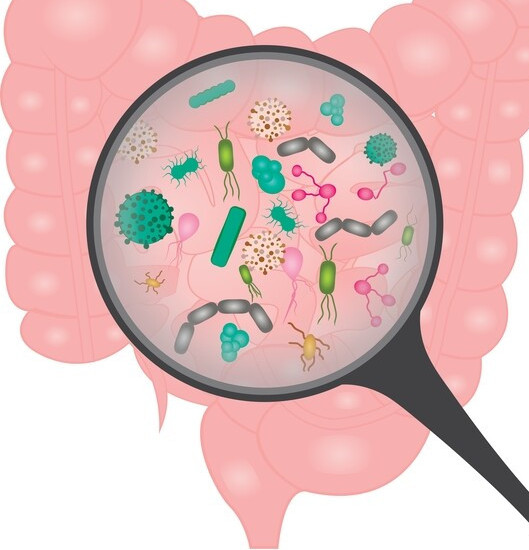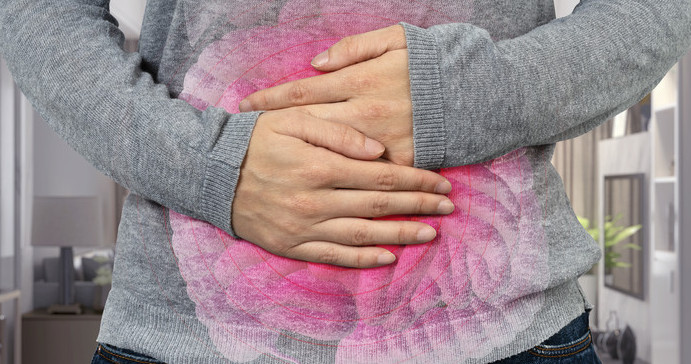What is SIBO?

SIBO stands for small intestinal bacterial overgrowth, meaning too much bacteria in the small intestine, microbes that belong to the large intestine has sneaked into the small intestine. This creates havoc on the intestinal system. Uncomfortable symptoms like bloating, cramping, belching, diarrhea, and a host of other symptoms pave the way causing many other health issues.
What Causes SIBO?
SIBO has many triggers as well as some risk factors that contribute to its symptoms.
- A deficient migrating motor complex- Due to slow motility of the intestines and stagnation of the contents not emptying as expected, the migration motor complex is disrupted which encourages excess bacterial overgrowth.
- Structural alteration to the small intestine- When there is scarring of the intestines or adhesions after bowel surgeries
- Malfunction digestive function- for example low stomach acid, poor bile production, liver congestion, or low pancreatic enzyme levels all create a friendly environment for SIBO to flourish
Some risk factors that add fuel to the fire of SIBO are
- Diseases
- Stress
- Prescription drugs
- Infections
- Inflammation
Very few people have the same causes or risk factors, or it could a combination of both, that’s why it’s difficult o diagnose SIBO.
What are the Symptoms of SIBO?
SIBO has some similar symptoms to other digestive disorders such as irritable bowel syndrome or IBS, Celiac disease, Leaky gut. Some of the common symptoms of SIBO 
- Gas and bloating after eating
- Belching, burping, and excessive flatulence
- Diarrhea
- Stomach cramping and pain
- Constipation
- Nutritional deficiencies
- Nausea
How is SIBO diagnosed?
It is difficult and tricky to diagnose SIBO, however, several diagnostic measures can be done. The first method is getting a direct culture from the small intestine by doing an endoscopy, the downside is that the endoscopy can only go as far as the duodenum, It is not able to reach the rest of the small intestine hence, missing to obtain a culture from part of it which not best method. Also, this test is risky because it’s more invasive.
The second method for diagnosing SIBO is doing breath testing, the patient drinks a sugary drink then the breath is collected every 15 minutes for 2-3 hrs. The higher the gas production of methane and hydrogen the more likely it is that one has intestinal bacterial overgrowth (SIBO).
This test can easily be obtained, it’s non-invasive. The drawback is, it’s not 100% accurate.
Some other tests that are done are stool test, organic acid test, and blood test for nutritional deficiency, they can support the diagnoses of SIBO but are never done alone.
How Serious is SIBO?
SIBO can affect your health if left untreated, which affects the other organs that are connected to the small intestines, the gallbladder, liver, and pancreas. When the pancreas is inflamed it causes pancreatitis that leads to pancreatic cancer. Vitamins mineral deficiencies and fat malabsorption occur as well.
SIBO contributes to a leaky gut syndrome which brings about a host of other gut issues. So Ya! SIBO can
bring about many health problems from allergies to making some bedridden for life if not treated.
What is the treatment for SIBO?
There is no single way to treat SIBO due to its complicated symptoms. Here are some of the ways that alleviate SIBO symptoms.
- SIBO and Antibiotics – They are used as the first line of defense against when some develop the infection. Most popular ones are Rifamixin, Ciprofloxacin and Metridazole. This study has shown about 85% effectiveness when a combination of rifampin and neomycin is used. Herbal antibiotics such Dysbiocide and FC Cidal and Cadibactin are other options with about 50% success rate of patients. When conventional antibiotics fail. Antibiotics can temporarily help but also can wipe off the good and bad bacteria.
- SIBO and Probiotics – Good gut bacteria can increase when probiotics are taken. All Probiotics are not one size fits all, They can work for some individuals and not for others. The most beneficial ones are Bifidus infants, Bifidus Lactis, and Lactobacillus Plantarum. They can be taken individually or in combination. The best way to use probiotics is after finishing the course of antibiotic treatment and trying different diets.
- Small intestine bacterial overgrowth diet – No single diet is guaranteed to be effective for SIBO: therefore many people go by trial and error with different diets to discover what works for them. Here are some of the SIBO diets that can improve your symptoms.
- Low FODMAP ( stands for fermented oligosaccharides, disaccharides, monosaccharides, and polyols) it a mouth full, I have discussed in a previous article on IBS please go here to find out more. It is recommended not to stay on this diet for more than 3 months because it can lead to malnutrition.
- Specific Carbohydrate Diet (SCD)- It is the elimination of some carbohydrates which are mostly processed foods also removing grains and dairy products can help heal the gut.
- Elemental diet – This is mainly in powder form, it can easily be absorbed without irritating the gut. The proteins are broken down, no fiber or food particles are included, which reduces inflammation and immune reactions. The digestive system rests while on this diet thus, improving SIBO symptoms. A study that was done showing about 80% of patients with SIBO, their lactulose breath test has normalized after 2 weeks on this diet.
Every diet has its pro and cons, none of them is perfect so tweaking and testing is the best way to go as many people react to diet differently. It is always best to get medical supervision while following any diet.
Foods to avoid with SIBO
As difficult as it can be to eliminate foods, it’s imperative to avoid foods that will feed gut bacteria to reduce or prevent bacterial overgrowth. The best way to tackle SIBO is to prepare it yourself, to see which foods have a positive or negative effect on the gut.
Here are five foods to avoid with the SIBO diet
- Processed sweets
Like pastries, candy, soda, all foods containing corn syrup as well diet that has fructose help feed the bacteria increasing bacterial overgrowth. - Some fruits and vegetables
Fruits and veggies that have high fructose, for example, apples, cherries, watermelon, dry fruits, grapes. Vegetables like asparagus, cabbage, cauliflowers, peas, mushrooms, onions, and many more. All these increase the severity of SIBO therefore avoiding them can calm things down and improve symptoms.
3. Lactose products
This is sugar mainly found in milk and milk products, for instance, yogurt, ice-cream cow’s milk, and cheese. This can exacerbate SIBO symptoms.
4. Drinks
Soda, fruit juice, alcohol, and sugary fruit drinks, mostly contain high fructose which is exacerbate small intestine bacterial overgrowth
5. Grains and Carbohydrates
Examples of this are, Multi-grain, lentils, peas, wild rice, potatoes. These are important foods for fueling the body, but some of them can also feed and fuel the bad bacteria if they stay too long in the small intestine.
Conclusion
Like any other digestive problem. Different people can experience SIBO symptoms differently and so is the treatment of SIBO, people respond to it differently. as well. SIBO is not easy to eradicate until the root cause is addressed by doing so, the treatment might be more effective, and getting rid of it might be easier.
References
- https://en.wikipedia.org/wiki/Talk:Elemental_diet
- https://pubmed.ncbi.nlm.nih.gov/14992438/
- Small Intestine Bacterial Overgrowth (SIBO): Overview and More (verywellhealth.com)
- https://www.ncbi.nlm.nih.gov/pmc/articles/PMC7386065/
